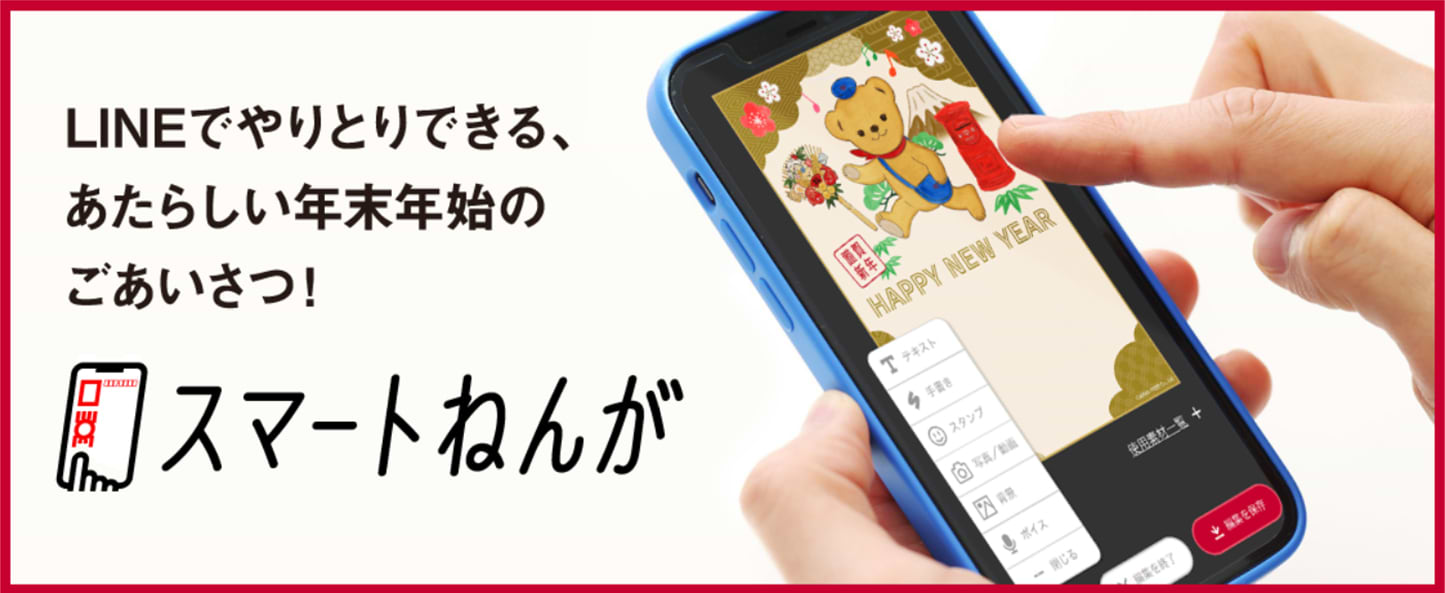
Sending New Year’s greeting cards is a long-established tradition in Japan. But in recent years, a growing number of people have been wishing each other a happy New Year using social networking services such as Line, the most widely used messaging app in Japan. In other words, while we retain our custom of exchanging New Year’s greetings, it is becoming increasingly digitalized. It is in this context that our team at Dentsu has been working to redefine the New Year’s greeting card.
Rather than threatening to replace these greetings cards with digital versions, however, we are looking for ways to enhance the greeting through digitalization. This has led to a new service, called Smart Nenga, that we created in collaboration with Japan Post Co., Ltd., the country’s primary postal delivery company. The service, launched in December 2021, resumed in November 2022. Below, I describe how it was developed and how it works.
Digital card reflects importance of New Year’s greetings
In Japan, New Year’s cards arrive in the mail starting on New Year’s Day. And while some people are worried that the tradition may disappear as communication becomes increasingly digitalized, many still believe in the importance of exchanging New Year’s messages.
The results of Dentsu's survey reveal that Japanese people of all ages value New Year’s greetings. The poll indicates that the cards are valued not just as greetings, but as a means of maintaining bonds between people. The cards provide regular opportunities to inform each other about important life events, such as births and marriages.
Further, the number of people who exchange New Year’s messages over the Line social networking app has been growing. This clearly indicates the importance of the greetings.
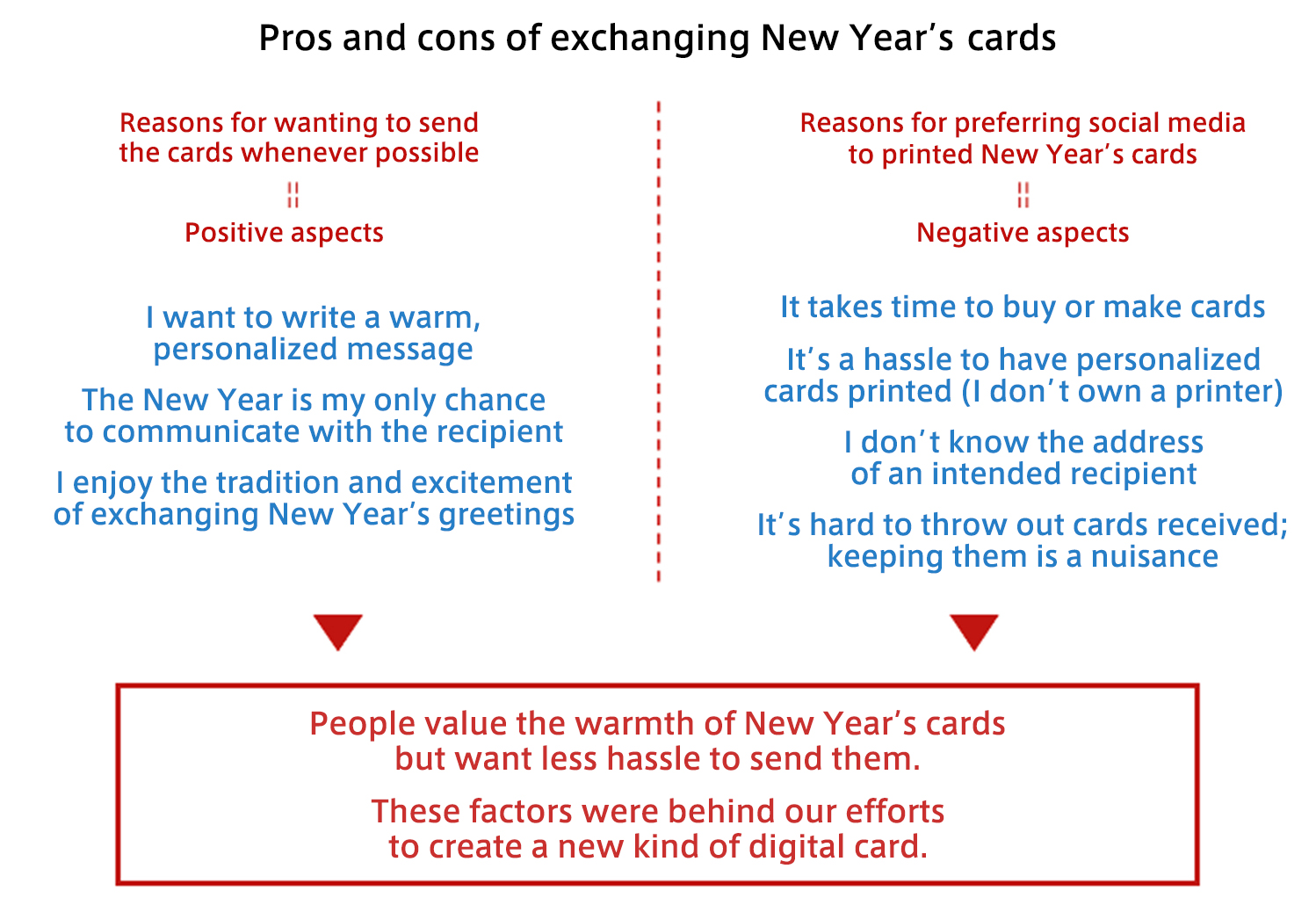
The idea for the Smart Nenga service stems from our assessment of the above factors. We thought that, for people who value New Year’s greetings, we could create a message that conveys the essence of a New Year’s card without being constrained by Japan’s postcard format. We wanted to give people the option of sending a New Year’s message digitally.
In other words, we hoped to create a service that would allow people across the country to easily send New Year’s greetings over Line and other social network services, while preserving the merits of the New Year’s card. Moreover, by making effective use of digital technology, we hoped to help revitalize the market for New Year’s cards, while passing down a cherished Japanese tradition.

When we presented this idea to Japan Post representatives, we found them most receptive. At the time, the digitalization of New Year’s cards was generally regarded as a threat to the traditional postcard format, so we had feared that the client would consider the idea problematic.
However, they recognized the importance of changing with the times. Moreover, they saw that, by giving consumers the option of going digital, they could broaden the base for exchanging greetings, including the use of conventional postcards.
Japan Post gave us a green light to start the project, at the same time understanding that problems might arise. Fortunately, the client believed in taking on challenges rather than giving up at the start.
On hearing this, our team knew that Japan Post was deeply committed to adapting its services, and we were motivated to meet the client’s expectations.
Today, we still are working with Japan Post to attain the same goals. We are happy with the arrangement, seeing it as mutually beneficial.
Can send, receive unlimited number of cards
The Smart Nenga service offers users many benefits, as shown below.
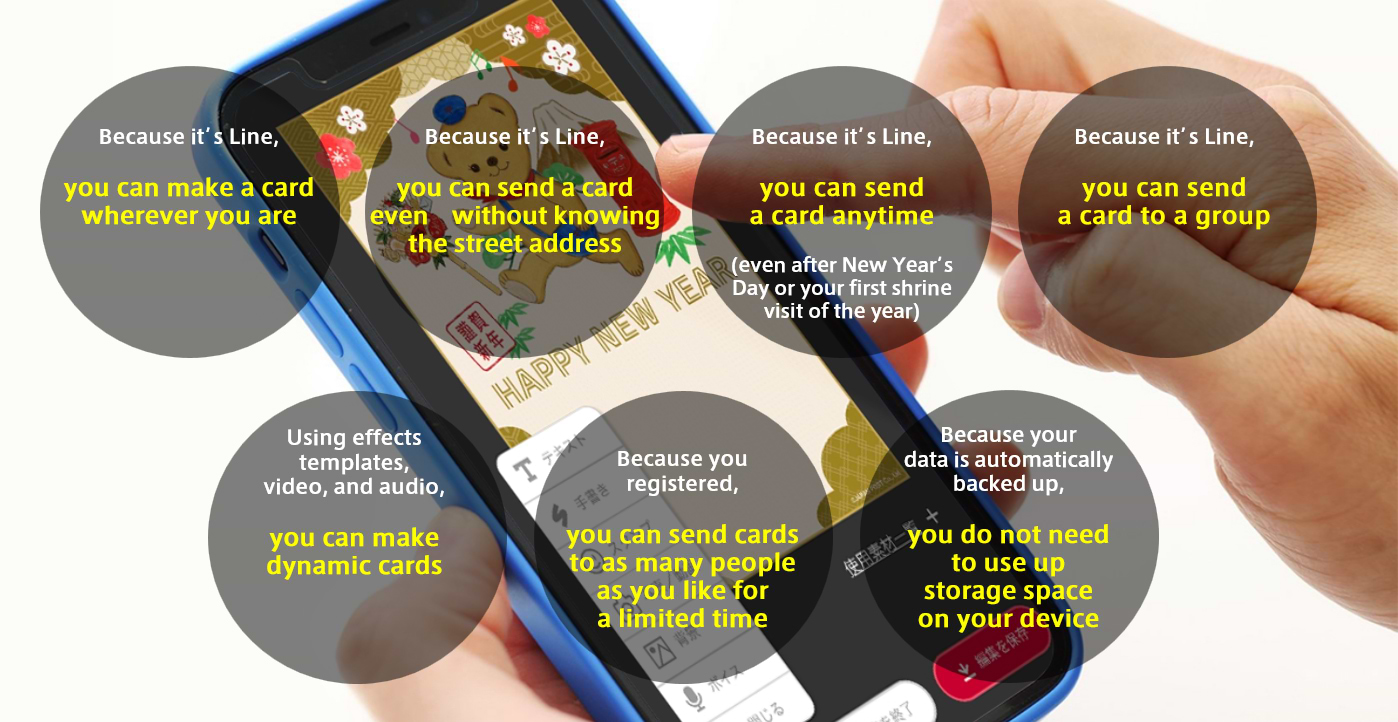
To send New Year’s greetings with the Line messaging app, users can purchase greeting card templates to create and send digital cards. They can also be received via Line.

To use the service, a Line user must connect to the Smart Nenga official Line account, or access it through the Japan Post official Line account menu. The user can then select and purchase any card designs from among those offered.
Designs can be customized with images, photos, videos, and personal messages. Users can try out the features using a free trial version, but must use the paid version for cards to be sent.
Once a card has been designed, the user can send it to a selected Line friend or group. Although the Line app is not designed to allow scheduled sending, users can create and save their designs in advance and then send them on New Year’s Day.
A user may also send the message in the form of a printed postcard, even if they do not know a Line friend’s street address. The service was set up with this option for two reasons: Many people do not know the home addresses of their Line friends, and the need to protect the privacy of users not wanting to disclose their address.
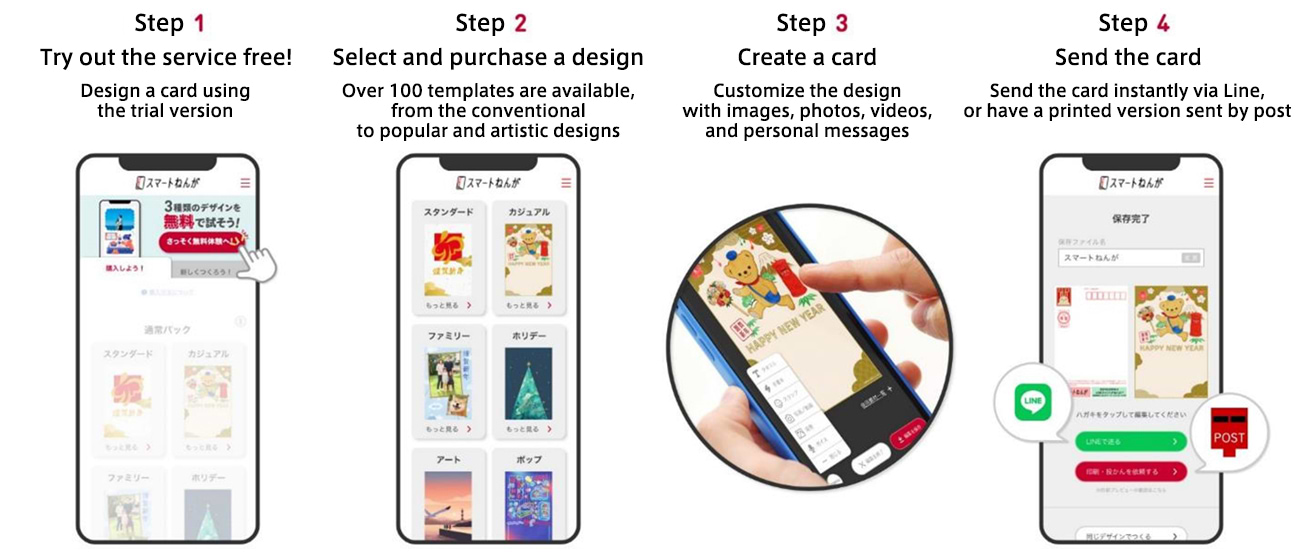
The procedure when a home address is not known is as follows.
- The user sends a message by Line informing the intended recipient that they wish to send them a card and asking them to enter their postal address in the appropriate place using the service app
- The person enters their street address
- It is sent, via the app, to Japan Post
- Japan Post prints out the postcard with the message and address
- The postcard is delivered
- The user pays Japan Post for the card
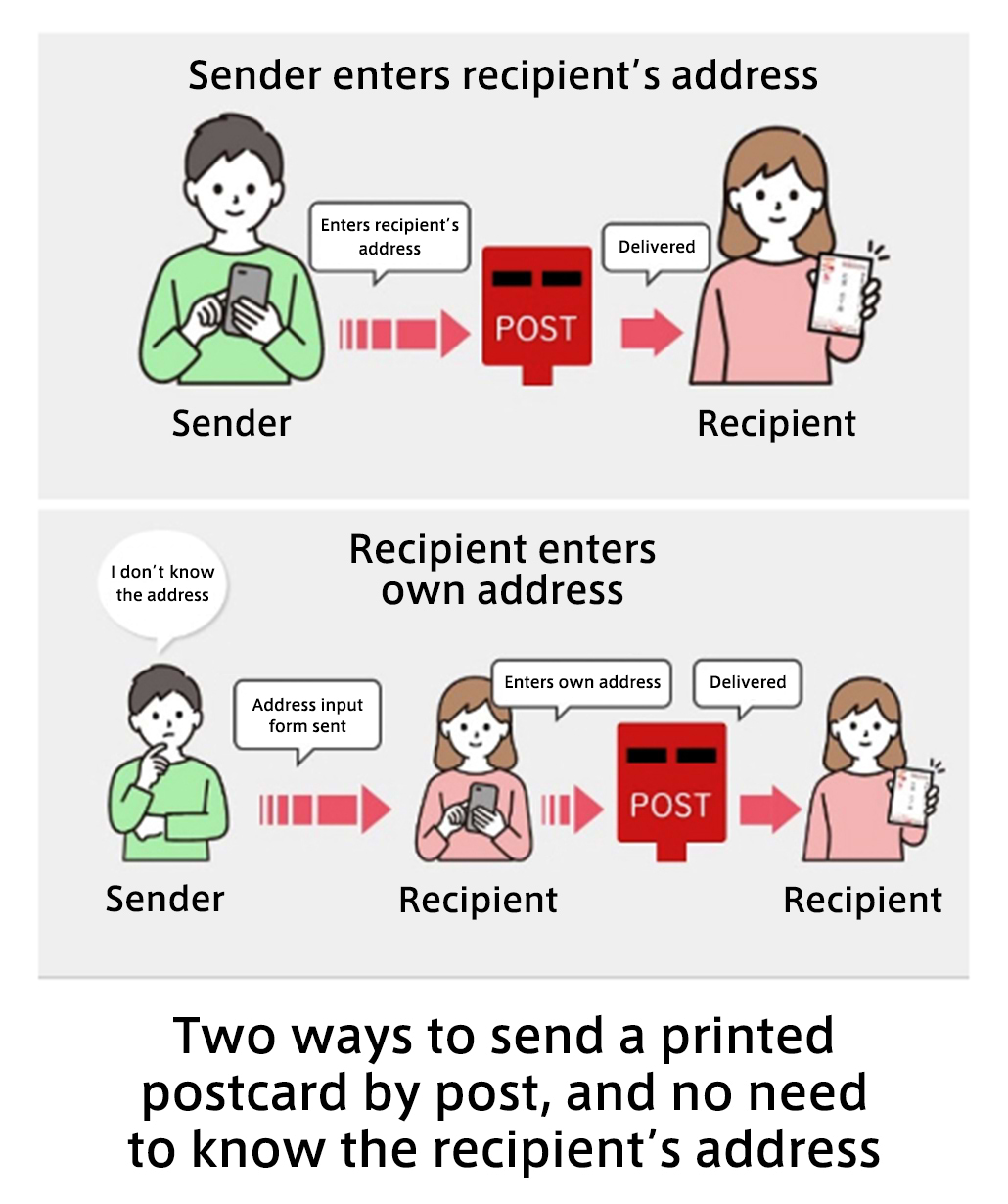
We have incorporated several features into the service to adapt the New Year’s card to the needs of today. When we launched it in 2021, we promoted two key features: The service can be used indefinitely after a card had been purchased, just like the Line stamp system; and cards can be sent to Line groups.
By offering a one-time payment plan that allows users to continue using designs and sending cards to as many friends as they wish, we expected the cards to reach a larger number of people, enabling them to learn about the service. This would result in the quick, widespread use of the service despite the relatively short sales period for the greeting cards.
Greater use of service expected
Although the service was new to the market in 2021, it caught the attention of many media outlets. As a result, media coverage was greater than we had expected and served to promote the service.
Likewise, the Smart Nenga site was better received and attracted more users than we had imagined. In fact, the service was added to the friends lists of about one million Line users and, although it is thought that fewer young people are sending New Year’s cards, we believe the service helped many of them realize that these greetings can be a lot of fun.
Some users told us that Smart Nenga allowed them to reconnect with people they had not seen for some time, which led to renewed meetings. That made us appreciate how the service is not limited to digital messages, and can also encourage face-to-face interaction.
Considering the first year’s results, we renewed the service for a second year on November 16, 2022. Then, to reflect user needs, we expanded the types of greetings offered and enabled cards to be sent whenever users want.
In addition to holiday greeting cards, new types of cards are now available. They include the cards popular in Japan wishing people good health during the winter, and those informing regular recipients of one’s New Year’s cards that none will be sent this year due to a death in the family or some other misfortune.
Compared with those available the previous year, cards this year have been enhanced with more fun themes, including TV anime characters featured in the design templates.
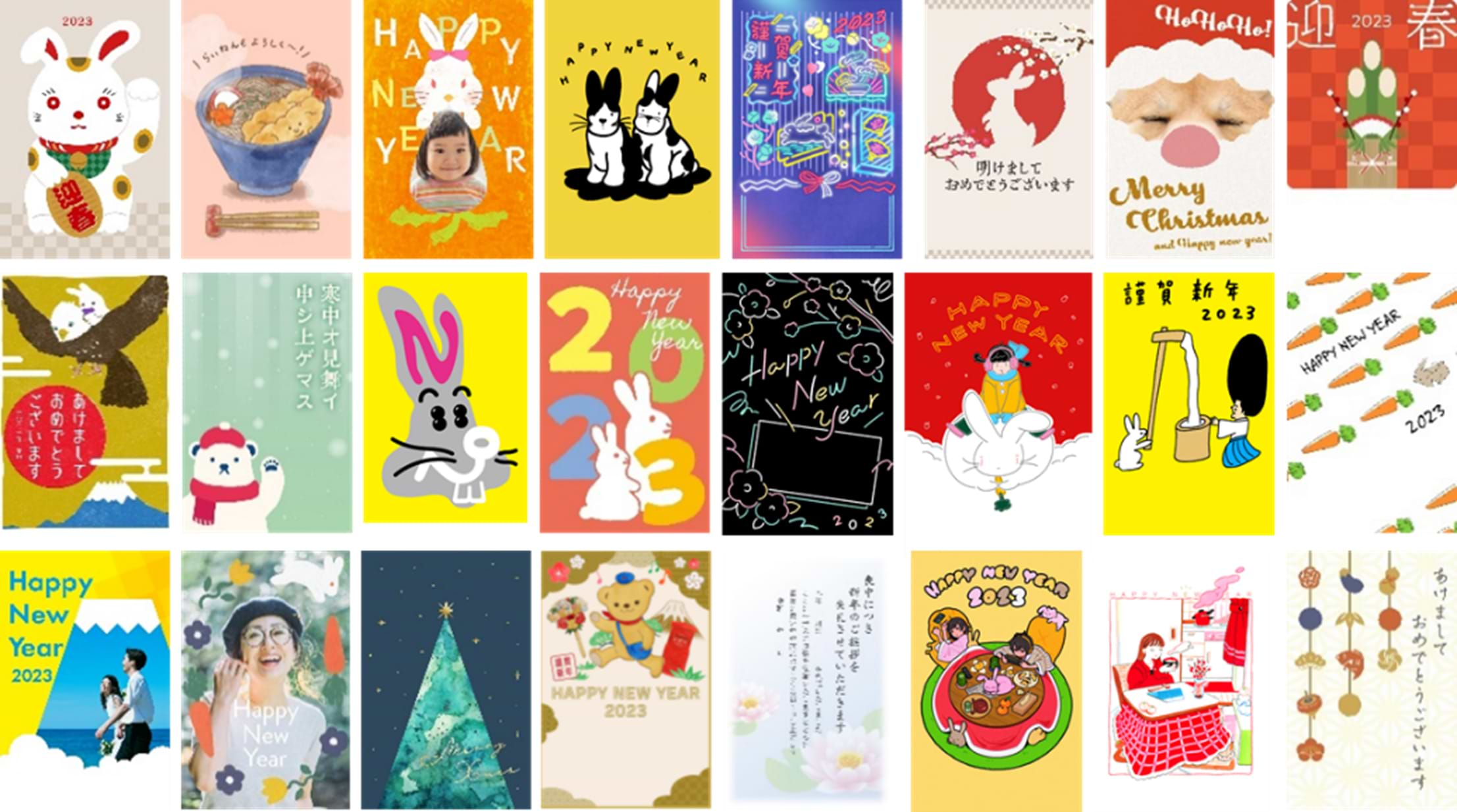
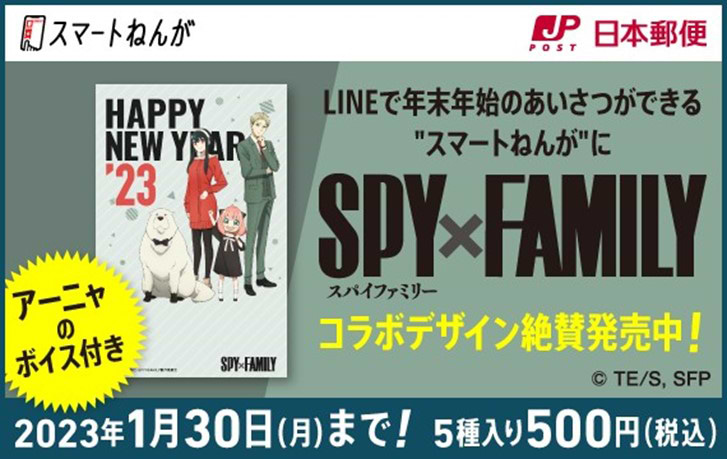
Since sending New Year’s greeting cards is a long-established tradition in Japan, perhaps the Smart Nenga service can create a new way of experiencing this pleasure today through the application of digital technology. We are very excited about the potential.
In this the second year of the service, while we hope the number of users will expand, our team at Dentsu is looking forward to continuing to work on the project with Japan Post.
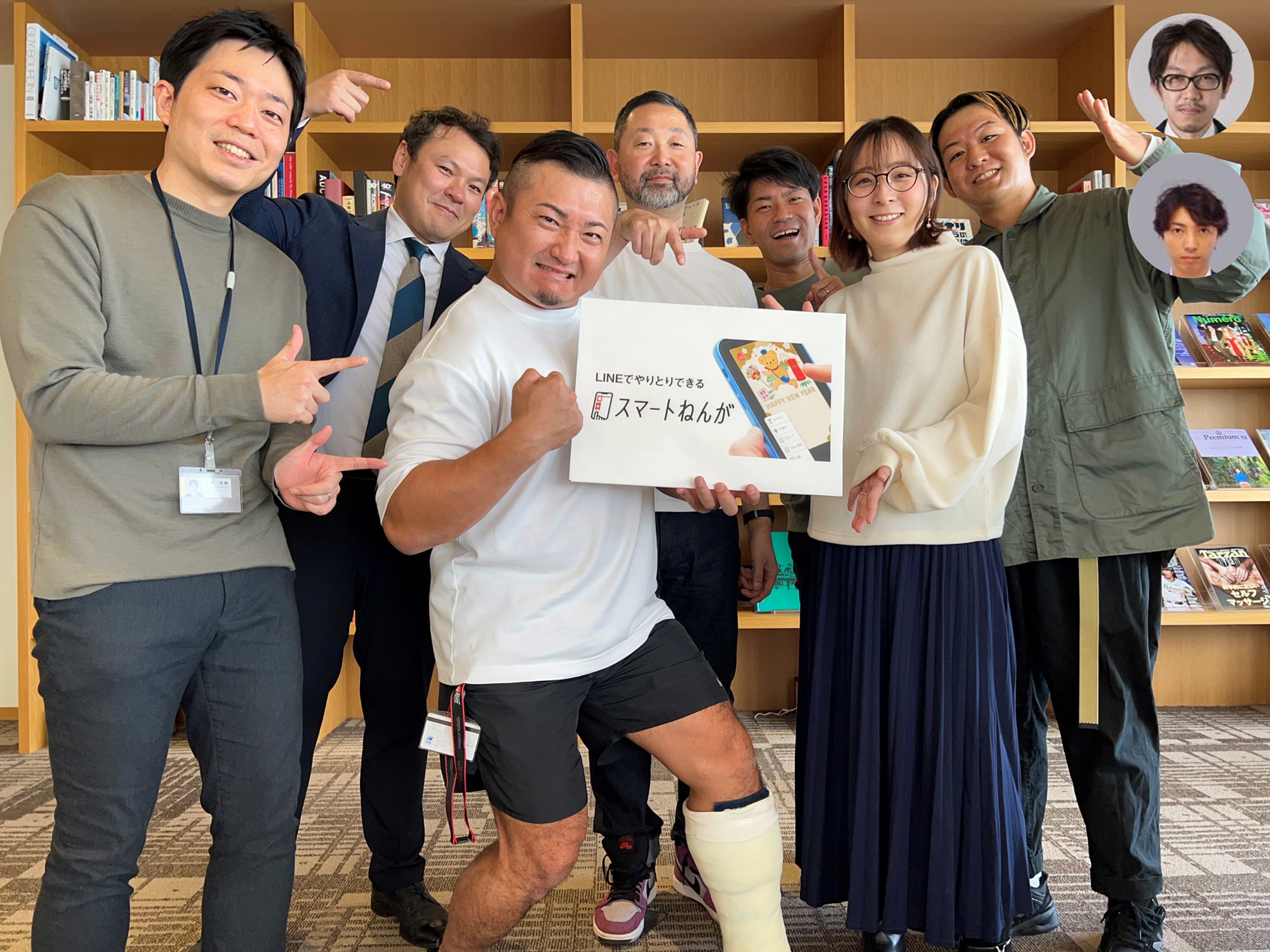
Related Link
スマートねんが - 郵便年賀.jp(Japanese language only)
Inquiries
Yuichi Fujimoto (Dentsu)
https://www.dentsu.co.jp/en/contactus/
